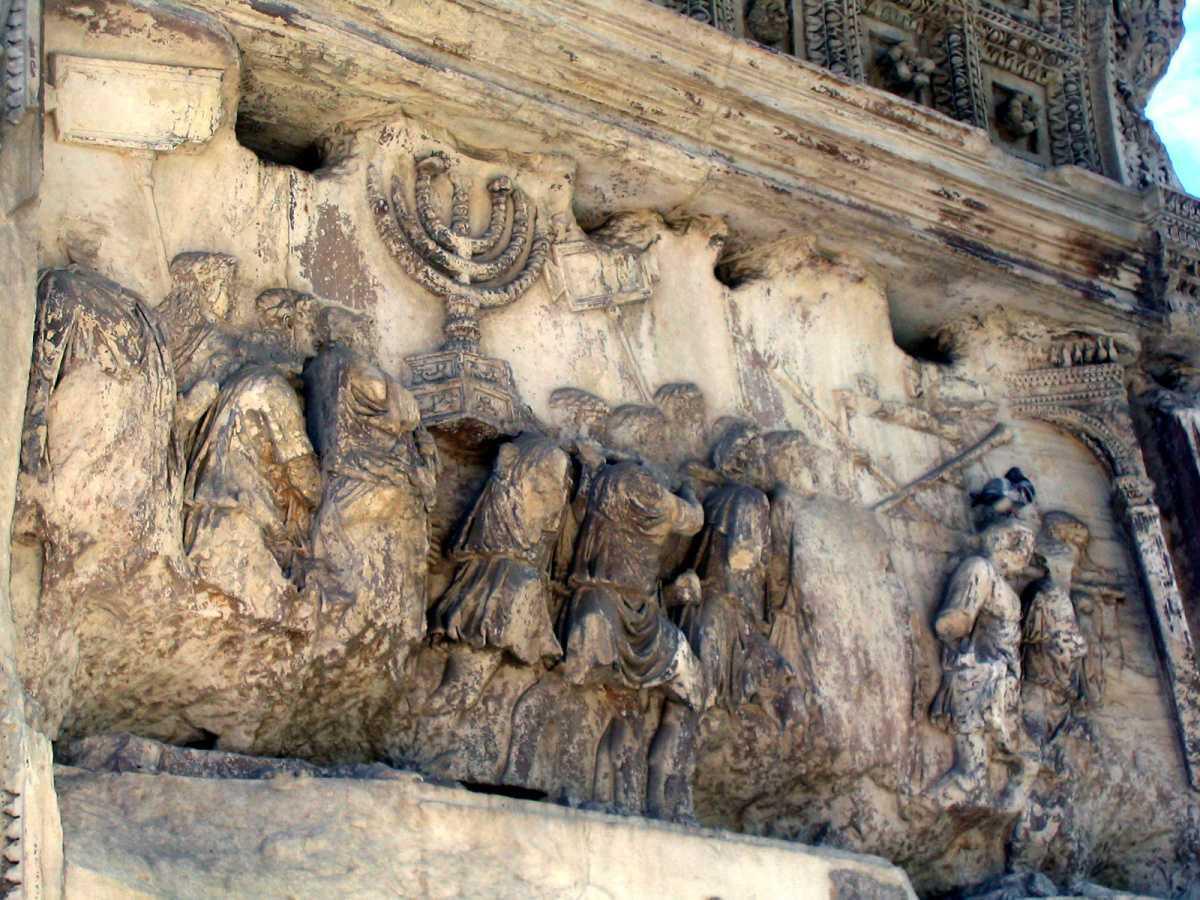
Arch of Titus
Via Sacra Roma Roma
The Arch of Titus was buildt to commemorate the Roman victory in the Siege of Jerusalem in 70 AD, led by General Titus during the First Jewish-Roman War. This brutal campaign resulted in the destruction of the Second Temple, a catastrophic event for the Jewish people and a turning point in history. Roman forces looted sacred artifacts, including the Menorah and other temple treasures, which are famously depicted on the arch's inner reliefs. For Christians, this event fulfilled Jesus' prophecy of the temple's destruction (Matthew 24:2), symbolizing a shift from temple-based worship to the new covenant through Christ. The arch stands not only as a monument to Rome's dominance but also as a silent witness to the early challenges faced by both Judaism and emerging Christianity.
Details of the Menorah Relief
-
Scene Depiction: The relief shows Roman soldiers triumphantly carrying the sacred treasures looted from the Second Temple in Jerusalem. Among these treasures is the Menorah, the seven-branched candelabrum that was used in the Temple as a symbol of the presence of God. The soldiers are shown walking in procession, with the Menorah held aloft, likely as part of the grand procession through the streets of Rome that followed Titus's victory. The Menorah is depicted in its full, elaborate design, with seven branches that curve upward, adorned with stylized flower shapes at the ends of each arm.
-
Symbolism: For Jews, the Menorah was a symbol of divine light and guidance, central to Jewish worship in the Temple. Its presence in the arch’s relief symbolizes not only the plunder of Jewish sacred items but also marks the loss of the Temple’s sanctity. The Menorah was a potent symbol of the Jewish people's religious identity, and its removal from Jerusalem and display in Rome became a symbol of Roman supremacy and the subjugation of the Jewish people.
-
Historical Context: The Menorah relief is often interpreted as a Roman assertion of power, showcasing Rome’s dominance over a once-mighty Jewish state and its sacred religious symbols. For Christians, the scene also has symbolic implications, as the destruction of the Temple and the loss of its artifacts fulfilled Jesus' prophecy about the Temple’s eventual fall, which is recorded in the Gospels.
-
Artistic and Cultural Impact: The Arch of Titus is one of the only surviving depictions of the Menorah from antiquity. It provides invaluable insight into the appearance of the Menorah, which was later lost after the destruction of the Temple. This depiction helped shape the later Christian and Jewish understanding of the Menorah’s role and significance. Its imagery has remained iconic, often representing the connection between ancient Jewish traditions and the tumultuous period of Roman rule.
This relief on the Arch of Titus is a poignant reminder of the cultural and religious upheaval of the time and stands as a lasting visual record of one of the most important symbols of Jewish faith in antiquity.
